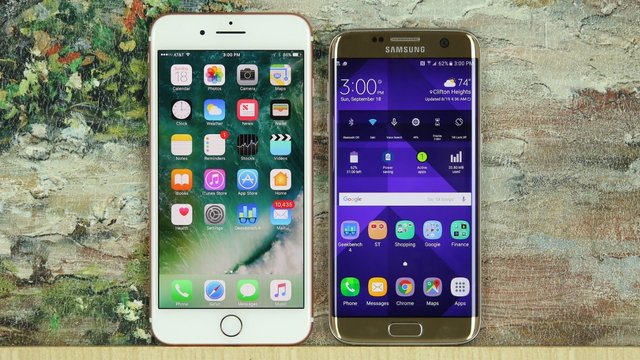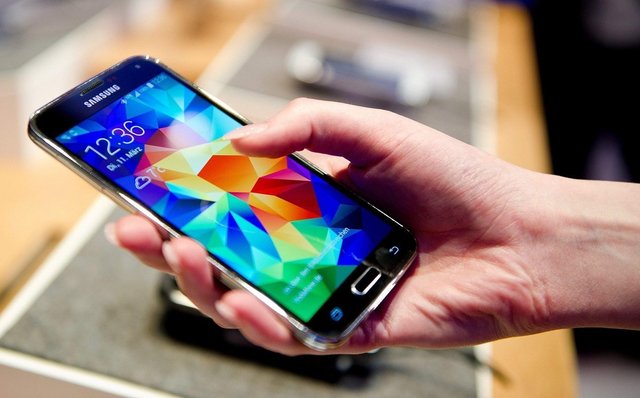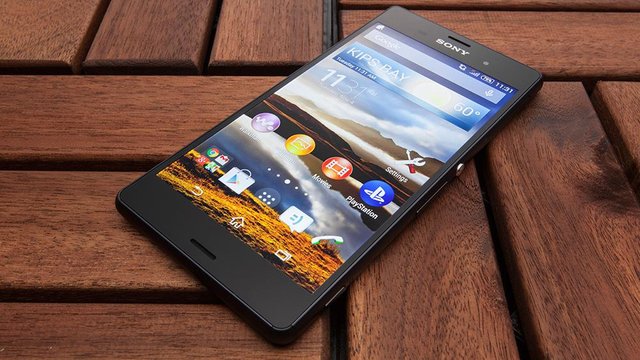#AMOLED VS #IPS_LCD DISPLAYS IN SMARTPHONES
OVERVIEW

One of the many choices you have when buying a new smartphone is display type. There are two major technologies on the market, AMOLED (or Super AMOLED) and IPS LCD, and both have their advantages and disadvantages. Here we'll explain exactly what you need to know about them without going too far into the complex technicalities of each approach.
Right away it's worth pointing out that all the major manufacturers put a few proprietary technologies on top of the foundations laid by AMOLED or IPS LCD – technologies usually given a baffling custom name – and that's why two AMOLED smartphones may not match in terms of depth and quality even if they're of the same type. In other words the quality of a phone's display is about more than whether it uses AMOLED or IPS LCD.
While we can talk about the differences between AMOLED and IPS LCD in broad terms, if you want to know the standard of the screen on one particular device, individual reviews are always your best port of call. Differences between these two technologies have changed over the years, and will continue to change as new upgrades appear, so keep an eye on the newest updates from the major manufacturers.
AMOLED

AMOLED (Active Matrix Organic Light-Emitting Diode) technology is now often seen in its next-generation Super AMOLED guise. With these displays, individual pixels are lit separately (that's the active matrix bit) on top of a thin film transistor (TFT) array that passes electricity through organic compounds (that's the OLED bit). It's a newer technology than IPS LCD and improves on it in some areas while still lagging behind in others.
At its heart OLED technology uses anodes and cathodes for electron flow through a very thin film; brightness is determined by the strength of the electron current. Color is controlled by the tiny red, green and blue light-emitting diodes built into the display. The best way of understanding it is to think of each pixel as its own independently colored, miniature light bulb on the screen.
Colors are typically brighter with AMOLED and Super AMOLED, and blacks are darker because portions of the screen can be effectively turned off. This also leads to a theoretical improvement in battery life, but that depends on exactly how you're using the screen (if all the pixels are lit all the time, the inverse can be true with AMOLED being more power-hungry than IPS LCD).
AMOLED traditionally suffered from "burn in," where pixel quality degraded over time, though this is becoming less of a problem as the technology improves. Also in the negative column, they cost more to produce and can appear less sharp when viewed at very close range.
Samsung is Super AMOLED's biggest fan, and you'll often find its phones being talked about in terms of the vibrancy and vividness of the colors – that's Super AMOLED at work. The technology scores highly for gorgeous-looking colors and very deep blacks.
The key difference between Super AMOLED and the standard AMOLED (often used by the likes of Motorola) is that the former integrates touch sensors in the display itself, removing the need for an extra layer and often allowing for an overall thinner device.
Generally speaking Super AMOLED also offers better brightness and battery life, though again manufacturers are working hard to minimize the difference with their own improvements.!
IPS LCD

In the other corner of the ring we have IPS LCD, or In-Plane Switching Liquid Crystal Display – as Super AMOLED is an upgrade on plain old AMOLED, so IPS LCD improves on the venerable (TFT) LCD technology. The mighty iPhone uses IPS LCD and from the manufacturers' point of view it's cheaper to produce, which is a bonus.
In essence, LCD uses polarized light which is then run through a color filter. Horizontal and vertical filters on either side of the liquid crystals control the brightness and whether or not each pixel is on or off. With the backlight included, the handsets are usually thicker – though as with many of these points progress is being made to fix that (and Apple's latest iPhones are notable exceptions).
All the pixels are backlit to some extent while the device is on, however, even the black ones. This means contrast and blackness can suffer (if you're watching a movie set in deep space, for example). On the upside, pixels can give the impression of being packed more closely together, aiding sharpness and clarity (something Apple is very keen on). IPS LCD is often spoken of as offering more natural colors; AMOLED screens can sometimes look a little over-saturated.
Viewing angles often aren't quite as good on IPS LCD as they are on AMOLED, broadly speaking, and again its the backlight to blame. On the other hand whites tend to come out better – the whites on an AMOLED screen can sometimes come across as slightly yellowy. Photographers tend to opt for IPS LCD displays as they show colours more accurately.
As well as Apple, LG is a big fan of the IPS LCD approach, and so is HTC. These displays can usually perform better in terms of their visibility in bright sunlight even if they're not quite as good for watching movies in a darkened room (as you can see, it's a tough call to pick one over the other).
Conclusion
There really is no winner when it comes to AMOLED vs IPS LCD, but it's still helpful to know what each technology involves. The quality of a screen primarily comes down to how a manufacturer applies its chosen standard, and a lot of potential problems on both sides – from battery drain to washed-out blacks – can be minimized with a high-quality production process.
Many of the issues and disadvantages we've talked about are being dealt with by Samsung, Apple and the other major players, as each one tweaks the displays in their handsets and the technology lying underneath. For that reason keep reading the reviews as they come out to see how AMOLED and IPS LCD fare in the years to come.
Ultimately, you should focus on the strengths of each technology when choosing – that's bright colors and deep blacks for AMOLED, and natural colors and sharpness for IPS LCD. It would be nice to have one technology that does everything perfectly, of course, but we're not quite there yet.